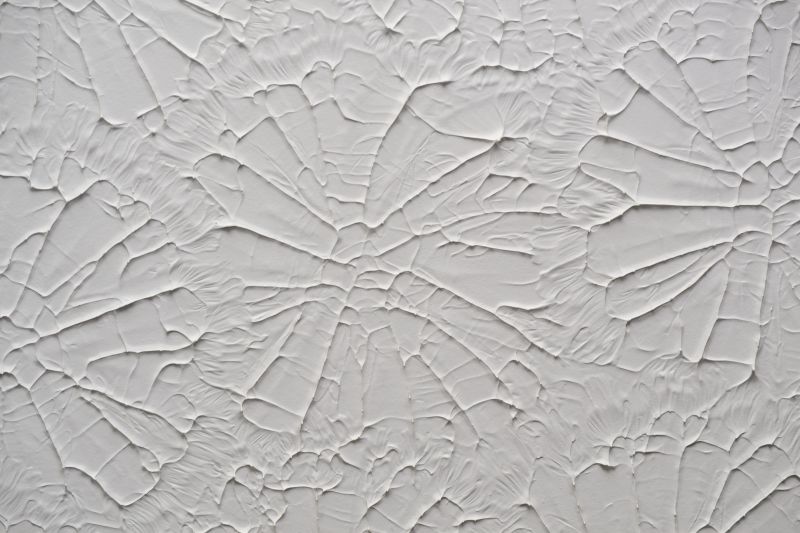Popular Wall and Ceiling Plaster Repair Products for Seamless Results
Explore a wide selection of trusted repair products that help you achieve smooth, professional finishes on your walls and ceilings.
 Wall and ceiling plaster repairs are common tasks in maintaining the integrity and appearance of interior spaces. Whether addressing minor surface cracks, holes, or larger damaged areas, selecting the appropriate products can significantly influence the ease and quality of repairs. A variety of materials and tools are available to suit different repair needs, from quick fixes to more comprehensive restoration projects. Proper preparation, application, and finishing are essential to achieve seamless results that blend with existing surfaces.
Wall and ceiling plaster repairs are common tasks in maintaining the integrity and appearance of interior spaces. Whether addressing minor surface cracks, holes, or larger damaged areas, selecting the appropriate products can significantly influence the ease and quality of repairs. A variety of materials and tools are available to suit different repair needs, from quick fixes to more comprehensive restoration projects. Proper preparation, application, and finishing are essential to achieve seamless results that blend with existing surfaces.
Top Overall Option
Multi-Purpose Wall and Ceiling Repair Compound
A versatile repair compound designed for filling cracks, holes, and surface imperfections on walls and ceilings. It offers easy mixing, smooth application, and a reliable finish that can be sanded and painted over once dried. Suitable for various repair sizes and types, this product provides a convenient solution for both quick fixes and more extensive restoration projects.
Types of Products For Wall And Ceiling Plaster Repairs
Ready-Mixed Patching Compound
Pre-mixed formulations that are easy to apply for small to medium repairs, offering convenience and smooth finishes.
Setting-Type Plaster
Powdered plaster mixes that set quickly and are suitable for larger or more structural repairs.
Joint Compound
Used for taping and finishing drywall joints, also effective for surface repairs.
Epoxy Repair Kits
Two-part epoxy systems ideal for repairing cracks and holes that require added strength.
Fiberglass Mesh Tape
Reinforcement material used to bridge cracks and reinforce repair areas.
Patch Repair Kits
All-in-one kits containing compounds, tapes, and tools for small repairs.
Skim Coating Products
Thin layers of finishing compound used to create a smooth, uniform surface.
Sandpaper and Sanding Sponges
Tools for smoothing and blending repaired surfaces seamlessly.
Bonding Agents
Primers that improve adhesion of repair compounds to existing surfaces.
Primer and Paint
Final finishing products to match repaired areas with surrounding walls or ceilings.
Heat Gun or Drying Tools
Devices used to accelerate drying times for certain repair compounds.
Taping and Reinforcement Materials
Materials used to strengthen repairs and prevent future cracking.
Scrapers and Putty Knives
Tools essential for applying and smoothing repair compounds.
Moistening and Cleaning Supplies
Products that prepare surfaces for optimal adhesion and finish.
Popular Choices
Widely used for filling minor cracks and holes, offering ease of application and smooth finishes.
Popular for larger repairs requiring fast setting and durable results.
Favored for small surface repairs due to its ready-to-use nature.
Commonly chosen for reinforcing crack repairs and preventing future damage.
Preferred for creating smooth, professional-looking surfaces after repairs.
Popular for comprehensive repair projects, includes various compounds and tools.
Selected for structural crack repairs requiring added strength.
Often used for finishing drywall joints and surface repairs.
Chosen for areas prone to movement or minor cracking.
Favored for achieving smooth, even finishes on repaired surfaces.
Popular for preparing surfaces before applying repair compounds.
Used to match textured wall finishes after repairs.
Commonly used to accelerate drying times for quick turnaround repairs.
Widely used for crack bridging and reinforcement during repairs.
Essential for finishing surfaces smoothly after repairs.
Popular for preparing areas before applying repair products.
For effective plaster repairs, understanding the different types of repair compounds and tools is crucial. Ready-mixed patching compounds are often favored for their convenience and ease of use, providing a smooth consistency suitable for filling small to medium-sized imperfections. For larger or more complex repairs, setting-type compounds or plaster mixes may be necessary to restore structural integrity. Additionally, tools such as putty knives, sanding sponges, and taping materials play vital roles in achieving professional-looking results.
Proper surface preparation is key to successful repairs. Cleaning the area to remove dust and loose material, followed by applying a bonding agent if needed, helps ensure good adhesion. Once the repair compound is applied and dried, sanding smooths out the surface, preparing it for priming and painting. Using compatible products throughout the process minimizes the risk of future damage and ensures a more durable finish. With the right combination of products and techniques, homeowners and professionals alike can restore walls and ceilings to their original condition efficiently and effectively.
Key Buying Considerations
- Type of damage: small cracks, holes, or large structural repairs require different products.
- Drying time: consider how quickly the product sets and dries to plan your repair process.
- Ease of application: choose products that match your skill level and tools available.
- Surface compatibility: ensure the product adheres well to existing wall or ceiling materials.
- Finish quality: select compounds that can be sanded smoothly for a seamless appearance.
- Durability: consider the strength and flexibility needed for the repair location.
- Paintability: verify that the repair material can be painted over for a uniform look.
- Reinforcement needs: for larger cracks, products with mesh or reinforcing tapes are beneficial.
- Environmental conditions: some products perform better under certain humidity or temperature conditions.
- Cost and quantity: evaluate the amount needed for your project to avoid shortages or excess.
- Brand reputation: while avoiding specific brands, look for trusted product reviews and recommendations.
- Compatibility with existing surfaces: ensure the repair product is suitable for drywall, plaster, or other materials.
- Application tools needed: check if additional tools like putty knives or sanding supplies are required.
- Long-term performance: consider products that offer lasting results with minimal maintenance.
- Health and safety: select products with low odor and safe handling instructions.
